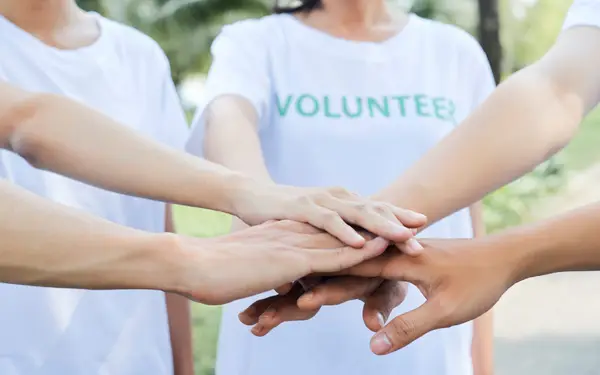Resource Constraints and Regulation Pose Challenges
I see two headwinds that NGOs and not-for-profits will have to contend with in the years ahead, said Laurence Kubiak, CEO at the New Zealand Institute of Economic Research (NZIER). The first is risk tolerance, he said. “The commercial entities with which we engage at NZIER are much more cautious now, even if their operating results are good,” he said. “That obviously could be a problem for non-profits and NGOs, because it’s better for those organizations when everything is buoyant and there's lots of money on the table,” he added.
The other issue NGOs will face in the years ahead is the level of public debt and the implications of that, he said. Many countries around the world followed some variant of the furlough type of thinking, he noted, paying people to tide them over until they could come back to work. “That's been funded by running up the public debt,” he said, adding, “It's essentially a mortgage on the future taxpayer.”
Charities will also be under increased scrutiny, according to Nathan. “We're going to see more regulation, less spending, and more expected for the dollars we get,” he said, adding, “The combination of more regulation and less money from government is going to be a delicate cocktail.”
The African Development Bank (AfDB) has already faced increased difficulty in securing financing from its bilateral partners to assist with ongoing challenges, given that these countries are also faced with huge spending due to immediacy of the health threat across the globe over the past year, said Nnenna Nwabufo, Director General, East Africa Region.
“Every country needed resources to support mitigation measures at home,” she said, while in the past, the Bank’s partners were able to do much more following major incidents, like locust invasions, widespread flooding and Ebola outbreaks.
Governments have been preoccupied trying to balance health safety and economic stimulus while funding historic vaccine campaigns, all of which has taken a toll on public finances, explained Nwabufo.
Focus on ESG Fuels Corporate Partnerships
With more and more for-profit businesses adopting environment, social and governance (ESG) frameworks, partnerships between corporates and NGOs are on the rise, however, presenting new financing opportunities, as well as new challenges, as these organizations shift gears to stay afloat while reinforcing their missions and building resilience.
“The shock of the past year had two major impacts for my organization and the movement I represent, both with silver linings,” said Adrian Zammit, CEO of Landcare New South Wales (NSW), a 60-thousand-strong member-based organization in Southeastern Australia that protects natural resources and plants trees. Restrictions on contact forced Landcare members to use technology rather than rely on face-to-face meetings, which resulted in greater efficiency, Zammit said.
“Secondly, it's really shaken C-suite executives to rethink their corporate social responsibility and environmental and social governance, not because the market has been telling them to do so, it's coming from within now, which is a change in mindset,” Zammit added.
“All of a sudden my organization has been swamped with opportunities from corporates here in Sydney wanting to partner with us to deliver some of their more sustainable objectives,” he noted, including banks, insurance companies, airlines, and all sorts of large multinational corporations.
The past year has driven home the importance of global connectedness, and corporate partners really saw that if there's a more equal playing field, everybody suffers less, said Christel House South Africa CEO Adri Marais.
Christel House, which aims to transform the lives of impoverished children by breaking the cycle of poverty, struggled to fundraise from individuals, as many were forced to divert their resources to personal struggles, Marais said, but the organization strengthened its corporate partnerships. “Corporates came to us. It was phenomenal, the ability to be agile, and for corporates to be willing to support us immediately.”
“They're looking for sanctuaries of safety and brand names that are likely to look after the money intelligently,” Nathan said, which favors the biggest non-profits with strong brand recognition.
“It's really been a bit of a shot in the arm, in terms of the opportunities it has presented, and obviously we're very keen to take advantage of that situation and we're working very hard to develop those partnerships,” Zammit added.
The biggest change of the past year for California-based Child Care Resource Center was that childcare became important for a lot of businesses that had never thought about it as being important, said CEO Michael Olenick.
“All of a sudden, we had partners we'd never known,” he said, noting hospital associations, especially, have been keen to support the organization, as well as banks. “They were like, ‘we need to get our folks childcare because they're stuck. They can't use who they were using and they need to have their kids somewhere because they've got to be in the hospital 12 hours a day. So all of a sudden we were getting funding to help those families do that, and we continue to get that funding.”
Organizations with a social intent are the glue between the function of government and the private sector, Marais said. Governments should be very clear about serving citizens, while private enterprise drives the economy and NGOs operate in the public interest with funding from both, she added.
South Africa is a showcase for how beneficial it is to have effective public-private partnerships, said Marais. “We need our private partnerships; we need our corporates to support and employ our kids and help them to pay for universities, to give them internships, to give them exposure.” Only by partnering with the private sector can you start to build a more equal society, Marais said.
Corporate partnerships aren’t a panacea, however, Nathan cautioned. The reputation of corporate partners is the starting proposition, he noted, with a great risk of contagion that NGOs need to be mindful of. “Their experience, if any, as a corporate partner with an NGO is an important element, along with their expectations of what they want from the partnership,” he said.
It’s not easy to find the right partnerships, noted van ‘t Hek. “It's like a quest; you have to develop it together, and I think that's positive,” she said. Corporates are now very much involved in program content, so it's a different dynamic versus 10 years ago, she added.
We need to make sure that the partners that we're trying to work with are aligned in terms of their ethos and their principles and their values with what we represent,” said Landcare NSW CEO Adrian Zammit.

